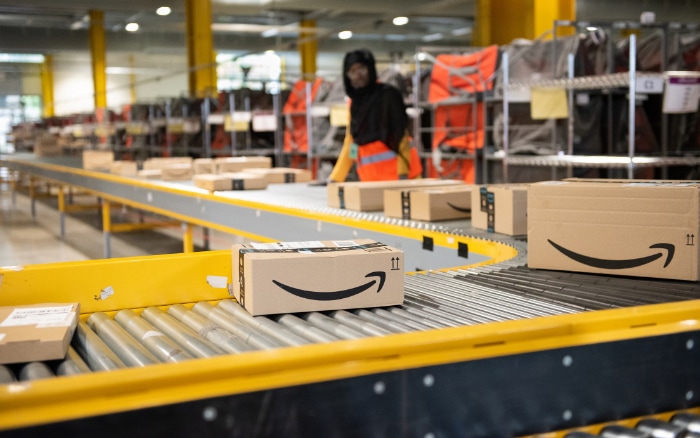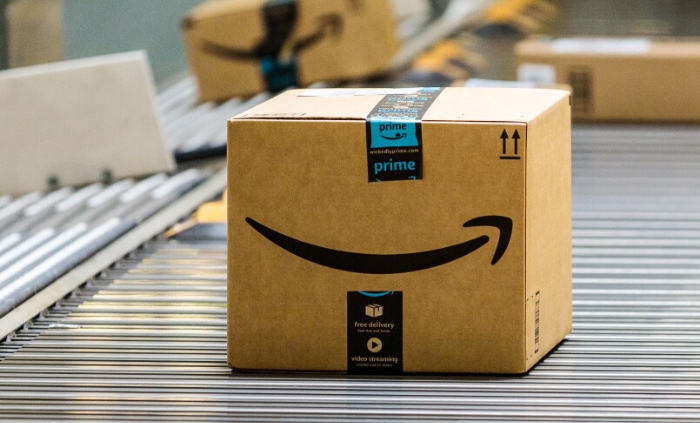Amazon Shipping: Reasons for Delays Explained

Dominating the e-commerce realm, Amazon has reshaped our purchasing habits and expectations. Catering to countless customers daily, the platform strives for punctuality in deliveries and a vast array of product offerings. Yet, there are moments when shipments lag behind the anticipated schedule, sparking queries and occasional customer discontent.
Dive with us into the intricate tapestry of Amazon’s logistical operations, as we demystify the occasional delays in shipments. Whether you’re a regular patron keen on understanding the gears of this retail giant or someone seeking answers for a tardy delivery, this article promises enlightenment.
Factors Influencing Amazon’s Shipping Times
Exploring the vast e-commerce landscape, Amazon juggles numerous elements to ensure products reach customers as promised. However, various internal and external factors can play a role in influencing shipping times.
Let’s dig deeper into the primary influences that can cause unexpected delays in Amazon’s shipping processes.
Inventory Management
One of the foundational aspects of any retail business is inventory management. This process becomes incredibly intricate for Amazon given the sheer volume of products.
- Out-of-stock Products: An item may be temporarily unavailable, leading to delays until restocking occurs.
- Multiple Warehouses: With a global reach, Amazon operates numerous warehouses. Sometimes, the product you order may have to travel from a distant warehouse, taking extra time.
Shipping Origin and Destination
Not all products come from a nearby location, and the dynamics of shipping can vary depending on the distances involved.
- Domestic vs. International Shipments: Items coming from international locations can take significantly longer due to various transit stages.
- Global Fulfillment Network: Depending on the product’s location within Amazon’s vast fulfillment network, your order’s journey can be short or extensive.
Delivery Infrastructure
The physical process of getting an item from the warehouse to the customer’s door involves numerous logistical operations.
- Logistics and Delivery Operations: Amazon’s intricate web of logistics can sometimes face hiccups, from vehicle breakdowns to routing errors.
- External Factors: Elements beyond Amazon’s control, such as inclement weather, strikes, or transportation issues, can introduce unexpected delays.
Volume of Orders
The number of orders Amazon processes can fluctuate, especially during sale seasons, leading to potential backlogs.
- High-demand Periods: Peak shopping times like Prime Day or Black Friday can put a strain on the system.
- Fulfillment Center Strains: During sale events, the sheer volume of orders can momentarily overwhelm even the most efficient of fulfillment centers.
Third-party Sellers
Not all products on Amazon are sold directly by the company. Many are offered by third-party sellers, introducing another layer of variability.
- Amazon’s Own Inventory vs. Third-party Sellers: Items sold directly by Amazon often ship faster due to streamlined processes. However, third-party sellers might have different logistics, leading to varied shipping times.
- Fulfilled by Amazon (FBA) Service: While some third-party sellers handle their own shipping, others use the FBA service, which typically ensures quicker, more reliable delivery.
Customs and International Regulations
For international orders, crossing borders brings its own set of challenges, often related to legalities and country-specific regulations.
- Customs Clearances: Each country has its own set of customs procedures, which can sometimes result in delays if there are inspections or paperwork issues.
- Import Regulations: Certain products may require additional verification or documentation before they’re allowed into the destination country.
Pandemic and Unforeseen Circumstances
In an ever-changing global landscape, unforeseen events can majorly disrupt what might be considered “normal” operations.
- Global Situations: Situations like the COVID-19 pandemic have shown how vulnerable supply chains can be, with impacts felt across industries.
- Natural Disasters: Events such as earthquakes, floods, or hurricanes can temporarily hinder or halt shipping operations.
How Amazon is Working to Improve Delivery Times
To maintain its reputation and keep up with the ever-increasing demand, Amazon continuously seeks ways to optimize and enhance its delivery processes. Innovations, expansions, and strategic collaborations have been central to these efforts, ensuring that customers receive their orders in the shortest time possible.
Here’s a glimpse into how Amazon is championing improvements in its delivery mechanisms.
Expansion of Fulfillment Centers
Amazon’s distribution strategy revolves around having multiple fulfillment centers around the world. This decentralization ensures products are closer to customers, reducing shipping times.
- New Warehouses: Regular investments in state-of-the-art warehouses mean that Amazon can stock a greater number of products in diverse locations.
- Strategic Geographic Positioning: Locating warehouses based on demand patterns ensures that most products can be shipped from a nearby location, reducing transit times.
Technological Innovations
In the realm of e-commerce, technology is a game-changer. Amazon leverages cutting-edge tech to refine and expedite its delivery processes.
- Drone Delivery Project: Amazon is exploring the potential of drones to deliver packages, especially in hard-to-reach areas or where faster delivery is essential.
- Warehouse Automation: Advanced robotics and AI-driven systems in warehouses help in quicker sorting, packaging, and dispatching of products.
Prime Membership and Prime Shipping
Amazon Prime is not just about streaming. This membership offers a slew of benefits, with expedited shipping being a prime attraction (pun intended).
- Faster Shipping Options: Prime members often enjoy same-day or next-day deliveries on eligible products.
- Dedicated Logistics for Prime: Amazon employs a dedicated logistics chain for Prime orders, ensuring they are given priority.
Partnerships with Logistics Providers
Amazon recognizes the importance of collaborations. By partnering with reliable logistics providers, the company ensures the last-mile delivery is efficient.
- Collaborative Endeavors: Working closely with major courier and postal services helps Amazon leverage their expertise and infrastructure.
- Amazon Flex: An innovative approach where individuals can sign up to deliver Amazon packages in their local area, providing a flexible and swift delivery mechanism.
Continuous Feedback and Adaptation
Understanding areas of improvement is crucial. Amazon relies heavily on customer feedback and data analytics to continually refine its processes.
- Real-time Tracking and Analytics: Sophisticated systems monitor deliveries in real-time, allowing quick rerouting or adjustments in case of issues.
- Customer Feedback Loop: Reviews, feedback, and complaints are taken seriously, with lessons learned integrated into future operations to prevent recurrence of issues.
Emphasis on Training and Development
The human element remains crucial in the delivery chain. Amazon invests in training its workforce, ensuring they are equipped to handle challenges.
- Training Programs: From customer service reps to delivery personnel, regular training ensures that the staff is up-to-date with the best practices.
- Safety and Efficiency: Emphasis on safe and efficient delivery practices ensures that packages reach customers in the best condition and at the fastest possible speed.
Tips for Customers to Ensure Faster Delivery

While Amazon goes to great lengths to optimize its delivery processes, customers can also take proactive steps to ensure their orders arrive swiftly. Being informed and making smart choices during the ordering process can make a notable difference in delivery times.
Here’s a guide to help Amazon customers navigate the maze of options for a more expedited delivery experience.
Choosing the Right Sellers
The seller from whom you purchase can significantly impact the delivery speed of your order.
- Opt for Items Marked “Fulfilled by Amazon”: These items are typically stocked in Amazon’s warehouses and benefit from the company’s efficient shipping processes.
- Check Seller Ratings and Reviews: Reliable sellers with high ratings are more likely to dispatch orders promptly and provide accurate delivery estimates.
Understanding Shipping Options
Amazon offers a variety of shipping methods, each with its own delivery timeframe. Knowing these can help you select the best option for your needs.
- Pick the Right Shipping Option: If your order is urgent, consider choosing expedited shipping methods available at checkout.
- Amazon Prime Benefits: Subscribing to Amazon Prime can give you access to faster shipping options, including same-day or one-day deliveries for eligible items.
Staying Updated with Order Tracking
Being informed about your order’s status can allow you to anticipate and address any potential delays.
- Use Amazon’s Order Tracking: This feature provides real-time updates on your package’s journey, helping you know when to expect it.
- Communicate with Sellers: If you notice a significant delay or any discrepancies in tracking, reaching out to the seller can often expedite solutions.
Provide Clear Delivery Instructions
Helping the delivery personnel with clear and concise instructions can prevent potential delays due to confusion or misrouting.
- Add Detailed Address Information: Ensure your address is up-to-date and includes any specifics like apartment numbers or gate codes.
- Use Amazon’s “Delivery Instructions” Feature: If you have special instructions for the delivery person, such as a preferred drop-off point, make sure to note it during the checkout process.
Schedule Deliveries When Available
Some items and locations allow you to choose a specific delivery window, ensuring you’re available to receive the package.
- Amazon Day Delivery: This feature lets you select a specific day of the week to receive all your orders, ensuring you’re home to collect them.
- Use Amazon Hub Locker: If you’re not home often, consider having your package delivered to an Amazon Locker, where you can pick it up at your convenience.
Be Aware of Peak Shopping Times
Recognizing busy shopping periods can help you plan your orders better, especially if they’re time-sensitive.
- Avoid Last-minute Orders Before Big Sale Events: If possible, place important orders well in advance of events like Prime Day or Black Friday to avoid potential shipping delays.
- Use Early Access Features: Prime members often get early access to deals, allowing them to place orders before the peak rush.
Regularly Update Account Details
Keeping your Amazon account details up-to-date ensures smooth processing and delivery.
- Check Payment Methods: Ensure your credit card details are current to avoid order processing delays.
- Update Profile Regularly: Ensure your email, phone number, and other contact information are accurate so that Amazon or sellers can reach out if there are any issues with your order.
Conclusion
Efficient delivery is a collaborative dance between Amazon’s intricate logistics and proactive customers. With Amazon continuously refining its operations and consumers staying informed about the best practices, the goal of timely deliveries becomes more attainable.
By embracing the insights shared in this guide and leveraging the tools and resources at their disposal, customers can significantly enhance their Amazon shopping experience and receive their coveted items without undue delays. Together, Amazon and its global community of shoppers are setting new benchmarks for the e-commerce world, one delivery at a time.



